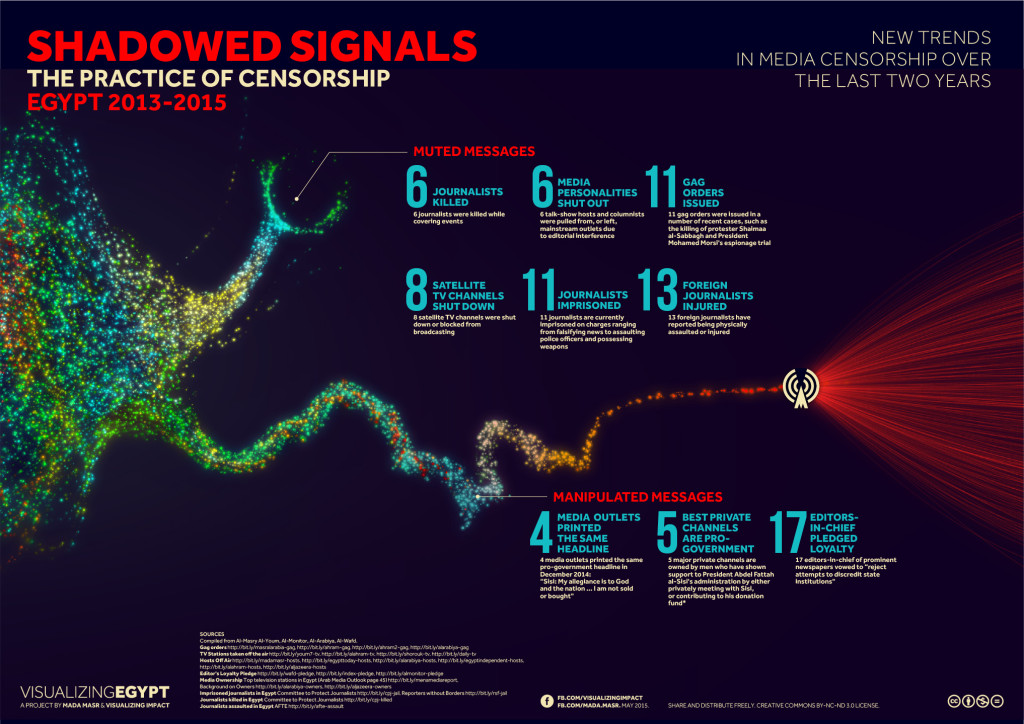Throughout the last two years, Egypt has witnessed a renewed state of media censorship, some aspects of which are reminiscent of the regime before the revolution, while others are new in scope and mode. Through the power of state institutions, impunity for those that assault media workers, editorial pressure and a consolidated media ownership, a new practice of censorship has taken root, while older methods have also persisted.
In an attempt to document the structure of censorship in Egypt, Visualizing Impact and Mada Masr collaborated in creating a series of visuals, the first of which was released on World Press Freedom Day, and tells the story of how media freedoms are curbed today.
This first visualisation explores censorship practices and their function in preventing message dissemination.‘Shadowed Signals’ aggregates information from the reports of media monitoring organizations, local and international press, to paint a visual metaphor of how real world events are filtered or blackedout altogether. The visual raises the salient point that mainstream press (both state run and privately owned) are susceptible to, or complicit in, the muting and manipulating of messages before they are ever even broadcast.
These chilling effects have shaped what arguably constitutes the larger portion of censorship, namely informal censorship, or soft censorship, which plays a large role in limiting speech. But the other significant aspect of self-censorship resides in its being a product of deliberate alignment with the ruling regime.
VI and Mada Masr’s next visual will look into a timeline of media development in Egypt, and the parallel evolution of censorship regimes.







